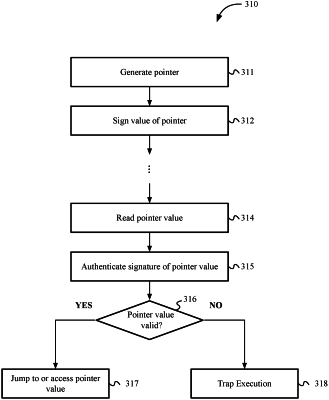| CPC G06F 21/44 (2013.01) [G06F 12/109 (2013.01); G06F 15/7807 (2013.01); G06F 21/125 (2013.01); G06F 21/54 (2013.01); G06F 21/565 (2013.01); G06F 21/78 (2013.01); H04L 9/0861 (2013.01); H04L 9/3236 (2013.01); H04L 9/3247 (2013.01); H04L 63/06 (2013.01)] | 21 Claims |

|
1. A method performed by an execution core of a processor coupled to a memory, the method comprising:
determining that a first mode of the execution core is enabled for a first process, wherein the first process supports pointer authentication;
authenticating, while in the first mode, a first memory address via a signature associated with the first memory address, the authenticating occurring before execution of an instruction associated with the first memory address;
switching from the first mode to a second mode in response to execution of an instruction of a second process fetched from the memory, wherein the second process does not support pointer authentication; and
bypassing, while in the second mode, authentication of a second memory address for the second process.
|